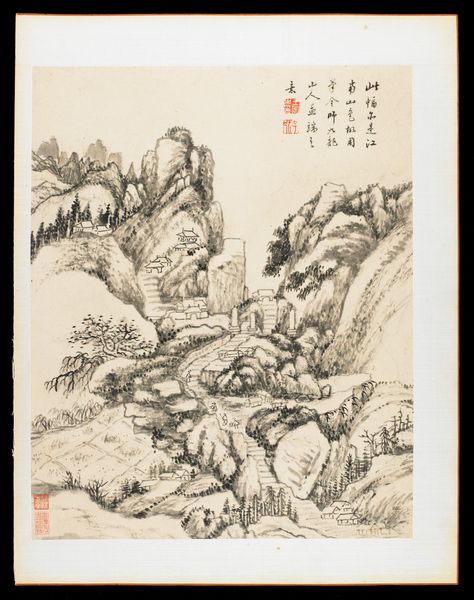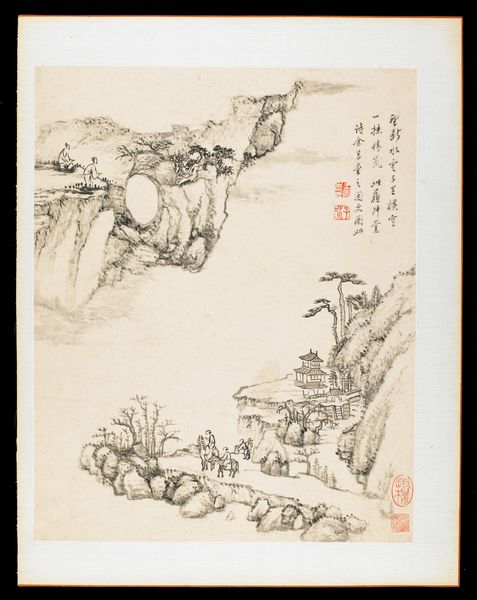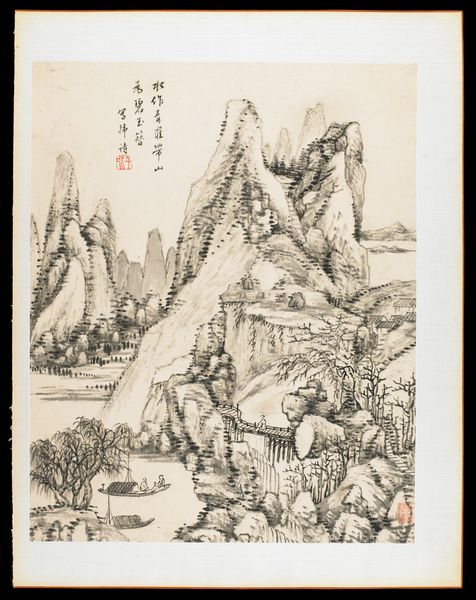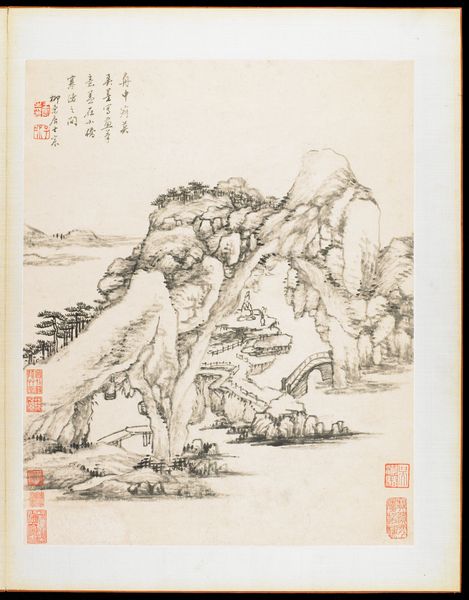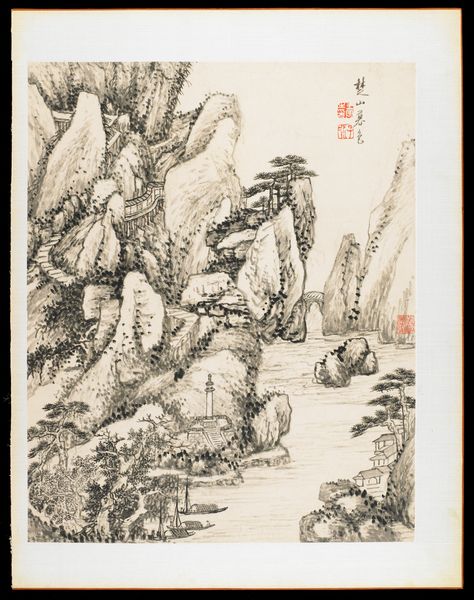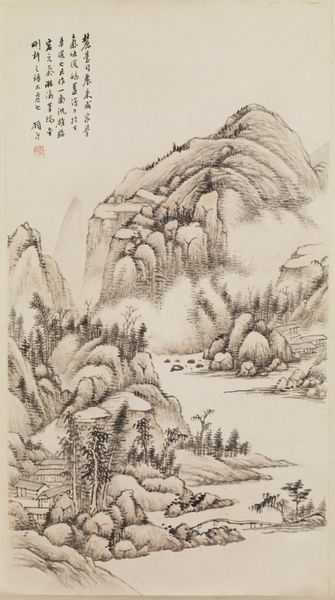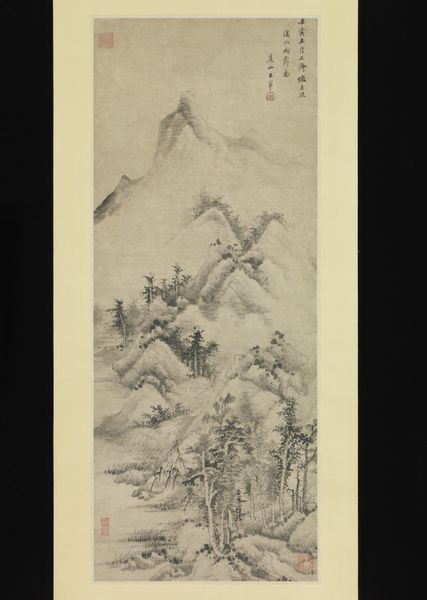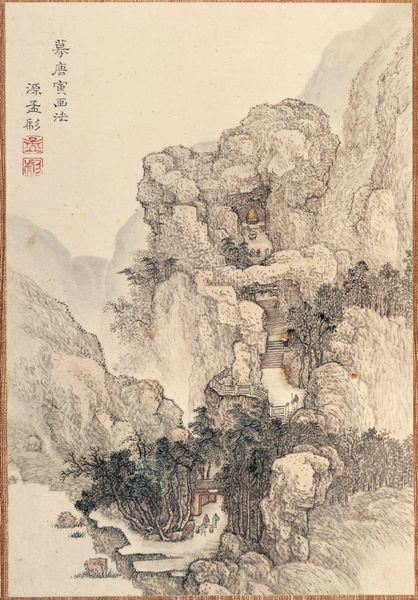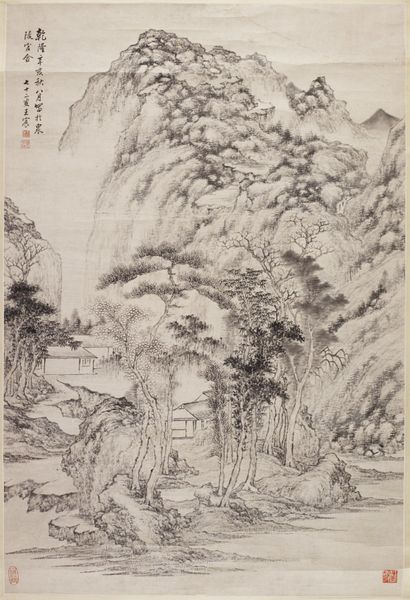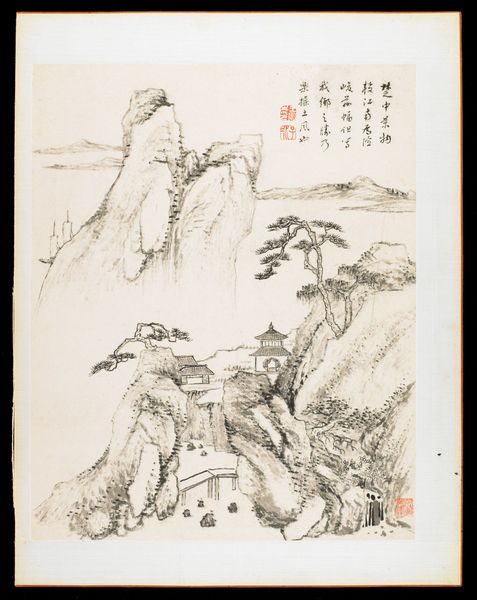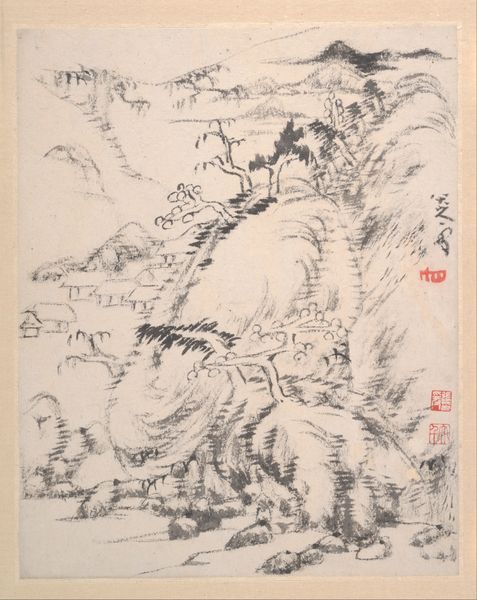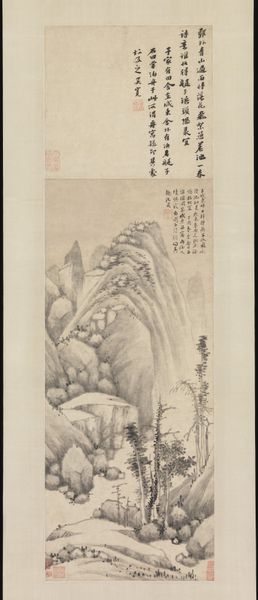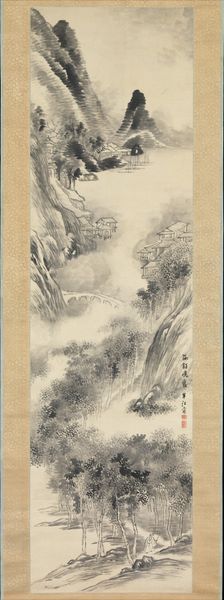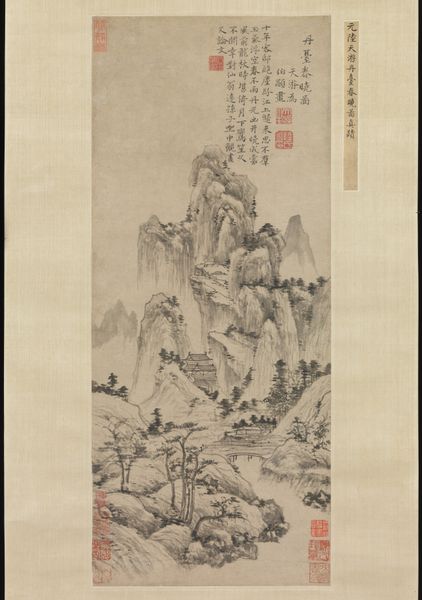
drawing, tempera, paper, ink
#
drawing
#
ink drawing
#
ink painting
#
tempera
#
asian-art
#
landscape
#
paper
#
ink
#
line
Dimensions: 16 7/16 x 13 3/16 in. (41.75 x 33.5 cm) (image)19 3/4 x 15 5/16 in. (50.17 x 38.89 cm) (leaf, overall)19 15/16 x 15 15/16 x 1 1/4 in. (50.6 x 40.5 x 3.2 cm) (entire album, overall, closed)
Copyright: Public Domain
Editor: So this is “Album Leaf,” a landscape in ink and tempera on paper, created in 1774 by Wang Chen. It has such a dreamlike quality. How would you interpret this work? Curator: Dreamlike indeed. The layered mountains create a sense of depth and distance that pulls me in, almost like a stage setting. I feel invited to wander, even lost, within its monochrome washes. Have you noticed how the ink varies in tone and density? Editor: Yes, from almost translucent to bold and graphic. It’s striking. And there's so much detail, but also a strong sense of simplification. Curator: It’s as if he's captured the essence of a grand landscape within a small space. Consider the cultural context: literati painting, with its focus on personal expression, introspection, and a reverence for nature, very Zen. What do the little houses suggest to you? Editor: Sanctuary, perhaps? Or the harmonious relationship between humanity and nature. Curator: Precisely! It evokes the artist's inner world – the quiet contemplation of a recluse amidst nature's grandeur. This piece echoes Taoist principles of balance, simplicity, and the harmony between humanity and the universe, don't you think? Editor: It’s all about finding yourself by losing yourself, isn't it? So, this small landscape isn't just a place; it's a state of mind. That's pretty wild. Curator: Yes, Wang Chen isn't merely painting a landscape, but rendering an experience, an inner journey – one he hopes, perhaps, we might take along with him. I found our wandering thoughts on sanctuary really fascinating today. Editor: Me too. I never would have guessed a simple ink drawing could be so profound.
Comments
minneapolisinstituteofart almost 2 years ago
⋮
Born in Kiangsu province, Wang Ch'en was a descendant of the great literatus Wang Shih-min and a great grandson of the artist Wang Yuan-ch'i. He served for a while in the Grand Secretariat and as a prefect in Hunan province. Wang's illustrious family heritage strengthened his reputation as an orthodox painter and he is one of the so-called Four Minor Wangs of the later Ch'ing. Wang's inscriptions here indicate that the basis for this album of large landscapes was the natural scenery of Ch'u, a Warring States (480-221 BCE) kingdom located south of the Yangtze River. In 1774, Wang was serving as a low-level official in this region. His inscriptions also mention earlier poets and painters whose conceptual and stylistic influences along with natural scenery inspired the various scenes here, which were based on sketches made at the sites themselves. The inscriptions read: 1) The landscape of Ch'u is extremely scenic. I came across one place and sketched it but neglected to ask its name. 2) One morning I entered the sea in search of Li Po; looking in vain among the paintings of mere mortals for the "Immortal of Ink." 3) The ceremonial burial mounds and Szechuan are neat. This is a scene of entering the gorge. 4) I have used the brushwork of Shu-ming (Wang Meng) to paint the style of Old Man Sung-hsueh (Chao Meng-fu). There is resemblance because they are from the same family.
Join the conversation
Join millions of artists and users on Artera today and experience the ultimate creative platform.
